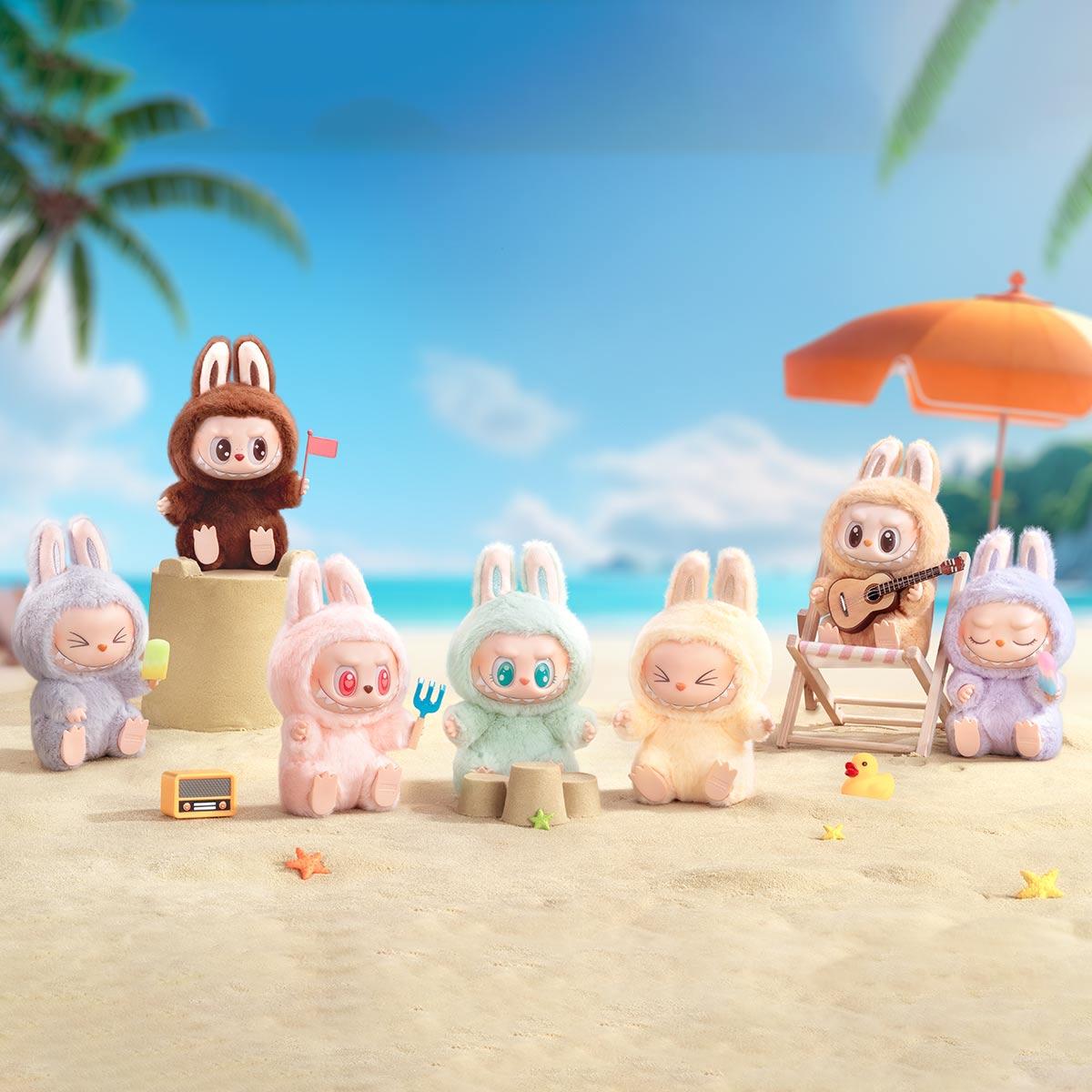The Canadian Market and the Labubu Blind Box Phenomenon

Over the last few years, Canada has witnessed a unique cultural and retail trend that blends art, consumerism, and playful mystery—the rise of blind boxes. Among these collectibles, the Labubu blind box Labubu series has quickly become a sensation, capturing the hearts of collectors, toy enthusiasts, and casual buyers alike. What started as a niche interest has grown into a thriving market segment, bridging the gap between designer toys, pop culture, and the psychology of surprise. The Canadian market, known for its openness to global trends and cultural imports, has proven to be fertile ground for this phenomenon.
Understanding Blind Boxes
Blind boxes are small, sealed packages containing collectible figures, with buyers having no prior knowledge of which design they will receive until the box is opened. This element of uncertainty transforms the act of purchase into an experience that mirrors the thrill of unboxing, gambling, and surprise all at once. The concept originated in Asia, especially Japan and China, where gachapon and collectible toys became mainstream long before they gained traction in North America.
In recent years, Canadian consumers, especially younger demographics and millennials with disposable income, have embraced blind boxes. The appeal lies not only in the artistry of the figures but also in the shared community culture of trading, showcasing, and completing sets.
The Rise of Labubu
At the forefront of this trend stands Labubu, a mischievous yet endearing character designed by the celebrated Hong Kong-based artist Kasing Lung. Labubu is part of the Pop Mart ecosystem, a brand that has established itself as the global leader in blind box culture. The character’s whimsical design, quirky expressions, and distinct features resonate strongly with collectors.
In Canada, Labubu has become more than a toy; it is a cultural statement. The figures are often seen displayed on office desks, bedroom shelves, or even within social media feeds, where collectors share their “pulls” and celebrate rare finds. Labubu’s popularity can be attributed to its playful artistry combined with the human tendency to seek joy in small surprises.
The Canadian Consumer Landscape
Canada offers a unique consumer landscape for collectibles. The multicultural population, with strong ties to Asian culture, plays a major role in making blind boxes popular. Cities like Toronto and Vancouver, with their thriving Asian communities, were among the first to see Pop Mart stores and Labubu merchandise become hot commodities. Specialty toy shops, hobby stores, and even mainstream retailers began stocking these products, signaling their broad appeal.
Additionally, Canadian consumers are highly engaged in online shopping, and the digital presence of Labubu through platforms like Amazon, Pop Mart’s official website, and local e-commerce hubs has widened accessibility. Social media platforms like TikTok, Instagram, and YouTube amplify the experience, as Canadian collectors post videos of their unboxing moments, fueling curiosity and demand.
The Psychology of Surprise
One of the driving forces behind Labubu’s popularity is the psychological pull of the blind box concept. Humans are naturally drawn to the excitement of the unknown, and blind boxes provide a controlled form of surprise. The act of unboxing creates a rush of dopamine, a chemical in the brain associated with pleasure and reward. For many collectors in Canada, opening a Labubu blind box becomes more than just a purchase—it is a ritual of anticipation, suspense, and delight.
This psychological engagement also taps into the collector’s instinct. The idea of completing a set or obtaining a rare “chase” figure keeps consumers coming back. Some even trade with friends or through online communities, turning the experience into a social activity.
Labubu as a Lifestyle Symbol
While toys are often associated with children, Labubu blind boxes have carved out a space in the lifestyle and design market. In Canada, young adults and professionals proudly showcase their Labubu figures as expressions of personality and aesthetic taste. The unique art style aligns with contemporary trends in minimalism, whimsy, and pop culture. For many, Labubu represents nostalgia for childhood joy but reimagined through an artistic, collectible lens.
The branding strategy behind Labubu also strengthens its identity. Limited-edition releases, seasonal collaborations, and artist-inspired designs keep the product line fresh and desirable. Canadians, who value both exclusivity and artistry, have responded strongly to these marketing tactics.
Retail Strategies in Canada
The entry of Pop Mart into Canada has been strategic. Pop-up stores in high-traffic malls, collaborations with local retailers, and digital campaigns have created visibility for Labubu. The physical experience of browsing rows of blind boxes in-store adds another dimension to the phenomenon, while online availability caters to convenience.
Canadian retailers also understand the importance of community. Events, meetups, and online forums dedicated to Labubu and blind boxes foster a sense of belonging among collectors. The phenomenon goes beyond commerce and enters the realm of social culture, where owning a Labubu figure becomes a badge of participation in a global movement.
The Secondary Market
A fascinating aspect of Labubu’s rise in Canada is the growth of the secondary market. Collectors often sell or trade duplicate figures, and rare Labubu designs can command high resale values. Platforms like eBay, Facebook Marketplace, and specialized collectible forums host thriving communities where buyers and sellers negotiate deals. For some, this creates opportunities for investment, while for others, it is simply a way to expand or complete collections.
The secondary market also reflects broader Canadian consumer behavior, where rarity and exclusivity are prized. This dynamic not only sustains demand but also deepens engagement, as collectors are motivated to hunt down elusive figures.
Challenges and Criticisms
Despite its popularity, the blind box phenomenon is not without challenges. Critics argue that the element of randomness can encourage overspending, as collectors continue to purchase boxes in pursuit of specific designs. In Canada, where consumer advocacy and responsible marketing are important, these concerns have been raised in conversations about blind box culture.
Environmental concerns also come into play. Each blind box is individually packaged, and the excess plastic and cardboard waste have drawn criticism from environmentally conscious consumers. Brands like Pop Mart face growing pressure to adopt sustainable practices, especially in markets like Canada where eco-conscious values are strong.
The Future of Labubu in Canada
Looking ahead, the Labubu blind box phenomenon shows no signs of slowing down in the Canadian market. As Pop Mart expands its presence and explores collaborations with Canadian artists or retailers, the potential for growth remains high. The integration of digital experiences, such as augmented reality reveals or NFT crossovers, may further enhance the appeal of Labubu in Canada’s tech-savvy consumer base.
Moreover, as blind boxes continue to blur the lines between toys, art, and lifestyle products, Canada will likely remain a key market where cultural openness and consumer curiosity converge. For Labubu, the future in Canada is bright, with opportunities to expand from collectible toys into a broader cultural icon.
Conclusion
The rise of Labubu blind boxes in Canada highlights how global cultural phenomena can take root in diverse markets. Blending artistry, psychology, and community, Labubu has transcended its identity as a simple toy to become a cultural symbol of joy, curiosity, and aesthetic appreciation. While challenges exist, particularly around sustainability and consumer LABUBU Box responsibility, the excitement surrounding Labubu continues to grow. In the Canadian market, this phenomenon reflects not only a trend in collectibles but also a deeper human desire for surprise, connection, and creative expression.
- Art
- Causes
- Crafts
- Dance
- Drinks
- Film
- Fitness
- Food
- Jocuri
- Gardening
- Health
- Home
- Literature
- Music
- Networking
- Alte
- Party
- Religion
- Shopping
- Sports
- Theater
- Wellness


